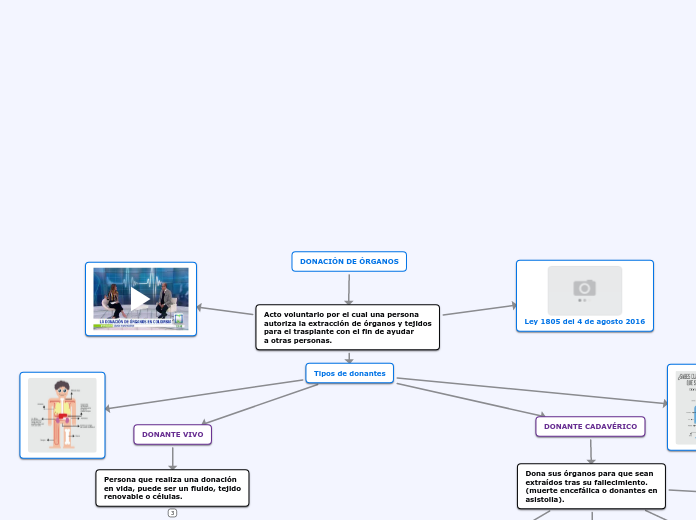Nombre: Jadira Nathaly Barros Zúñiga
RAÍZ DE LA ARTERIA AÓRTICA
To name your story, you have to think about the overall message and what you want your audience to understand from the story. Also, make it relevant and easy to remember.
Aorta descendente
The ending of a story is essential. We all know that if the ending is weak, what happened before loses its importance. So make it unpredictable, but fair. A resolved ending answers all the questions and ties up any loose threads from the plot.
Aorta torácica
Ramas parietales
A. intercostales posteriores: Irriga: piel, músculos y costillas de la pared torácica. Vertebras torácicas, meninges, medula espinal y glándulas mamarias. A. subcostales: Irriga: piel, músculos y costillas de la pared torácica. Última vertebra torácica, meninges, médula espinal
Ramas viscerales
A. pericárdicas: Irriga: tejidos de saco pericárdico. A. Bronquiales: Irriga: tejidos del árbol bronquial, tejido pulmonar circundante hasta el nivel de los conductos alveolares. A. esofágicas: Irriga: Todos los tejidos del esófago A. Mediastínicas: Irriga: tejidos del mediastino y ganglios linfáticos.
Aorta abdominal
This is the closure section of the story.
See examples of possible outcomes below:
- all problems have been solved
- it's clear how each one of your characters ends up
- your main character is transformed by the challenge
A. Lumbares (1-4): Irriga: Vértebras lumbares, médula espinal y meninges; piel y músculos de las regiones lateral y posterior de la pared abdominal. A. Sacra media: Sacro, coxis, nervios espinales sacros y músculo piriforme
A. Renales: Irriga: Riñones
A. Suprarrenales: Irriga: Glándulas suprarrenales
A. Iliacas comunes: Irriga: miembros inferiores A. Iliacas internas: Irriga: útero, próstata, músculos glúteos y vejiga urinaria.
A. Mesentérica superior: Irriga: intestino delgado, ciego, colon ascendente y transverso y páncreas.
A. Mesentérica inferior: Irriga: colon transverso, descendente, signoides y recto.
Tronco celiaco A. Hepática común: Irriga: hígado, vesícula, epiplón menor, estómago, páncreas y duodeno. A. Gástrica izquierda: Irriga: estómago y esófago. A. Esplénica: Irriga: bazo, páncreas y estómago.
A. Testiculares: Irriga: testículos. A. Ovarias: Irriga: Ovarios.
A. frénicas inferiores: Irriga: superficie inferior del diafragma y glándulas suprarrenales.
Try answering these questions in order for you to come up with a closure:
- Have all problems been solved?
- Is it clear what happens with all your characters in the story?
- Has the challenged transformed your main character?
- How do the characters feel in the end?
Arco o cayado aórtico
In the beginning of the story (or the exposition), you will need to introduce the setting and characters. You might also want to introduce the main conflict. This part of the story is important because it gives the reader necessary background information and maybe even a first insight into a character’s personality.
A. Subclavia izquierda: Irriga: Distribución similar a la A. Subclavia derecha.
A. Axilar izquierda, A. Braquial izquierda, A. Radial izquierda, A. Cubital izquierda.
A. carótida común izquierda: Irriga: Distribución similar arteria carótida común derecha.
A.Carótida común interna izquierda A. Carótida común externa izquierda.
Tronco braquiocefálico: Irriga: Cabeza, cuello, miembro superior derecho y pared torácica.
Characters are essential to a good story. Usually, the protagonist(s) is/are the most affected by the plot. Introduce a character by focusing on their actions, interests, and occupation, as the physical appearance doesn't make a difference in most cases.
A. Subclavia derecha: Irriga: Miembro superior derecho
Arteria axilar derecha: Irriga: Músculos torácicos, del hombro y escapulares y húmero.
Which traits best describe the character's personality? Choose more if necessary:
introvertedloyalkindindependentquick-thinkingadventuresomeidealisticsweet-naturedcalmrisk-takercreativewittystrictfussyweirdclumsyharshaggressivecarelessclingingcowardlycrueldeceitfulimpulsiveOther
A. Braquial derecha: Irriga: Músculos del brazo, húmero y articulación del codo.
A. Cubital derecha: Irriga: Músculos anteriores del brazo .
A. interósea común derecha A. Cubital (rama anterior del carpo) A. Cubital (rama superficial del carpo) Arco palmar profundo derecho: Irriga: Músculos, huesos, articulaciones y piel de la palma y dedos. Arco palmar superficial derecho: Irriga: Músculos, huesos, articulaciones y piel de la palma y dedos.
A. Radial derecha: Irriga: Músculos posteriores del brazo.
Arco palmar superficial derecho, A. Capilares, A. Metacarpiana.
A. Profunda del brazo, A. Colateral cubital, A. Ascendente cubital
A. torácica superior Tronco toracoacromial: A. Toracoacromial ( rama pectoral) A. Subescapular derecha. A. Circunfleja humeral posterior derecha A. Circunfleja humeral posterior izquierda.
A. Vertebral derecha: Irriga: Cerebro posterior, cerebelo, protuberancia y oído interno. A. Torácica: Irriga pared torácica anterior. Tronco costo cervical: A. Tiroidea anterior, A. Subescapular derecha, A. Circunfleja humeral posterior derecha, A. Circunfleja humeral anterior derecha.
A. Carótida común derecha: Irriga: Cabeza y cuello
Type in the name of your character.
A. Carótida interna derecha: Irriga: Globo ocular, oído, parte de la nariz, Lóbulos temporal, frontal, parietal, hipófisis y piamadre.
What is your character's main goal?
fight Evilfind lovedefeat his/her enemyrule the worldmake friendstime travelmake an awesome discoveryOther
A. Carótida interna ( porción petrosa), A. Carótida Interna ( porción cavernosa), A. Carótida interna ( porción cerebral
Carótida externa derecha: Irriga: Piel, músculos, huesos, articulaciones, duramadre, aracnoides y una parte del cuello.
Choose the type of your chacter:
Protagonist (main character)Antagonist (main character's opponent)Flat (stereotypical character)Round (his/ her personality develops throughout the story)Static (doesn't evolve as a person throughout the story)Dynamic (dramatical change in personality)Confidant (the main character trusts him/ her)Foil (contrasting character who enhances the personality of another character)Other
A. Maxilar, A. Facial, A. Occipital, A. Temporal superficial, A. Auricular, A. Lingual.










